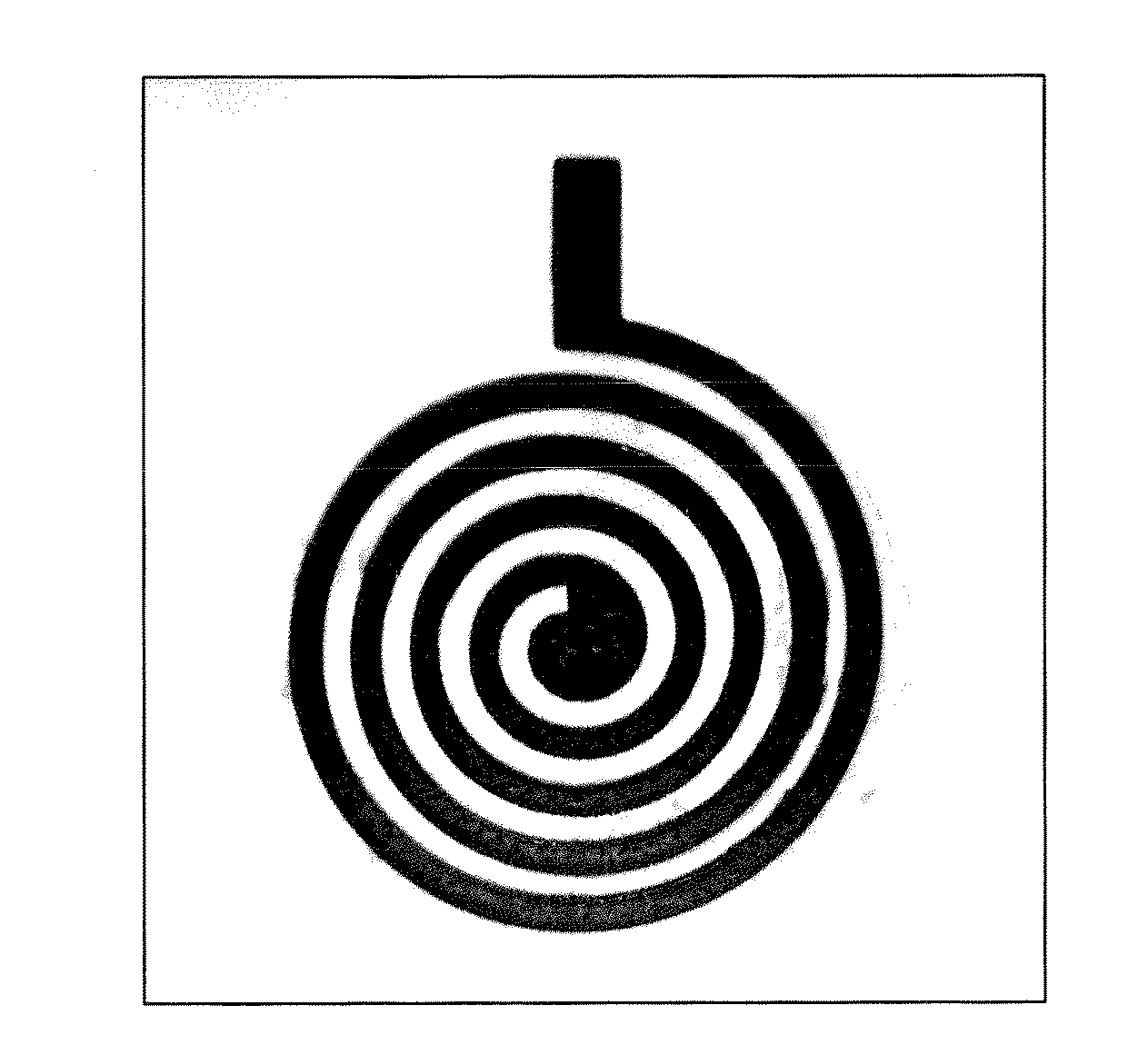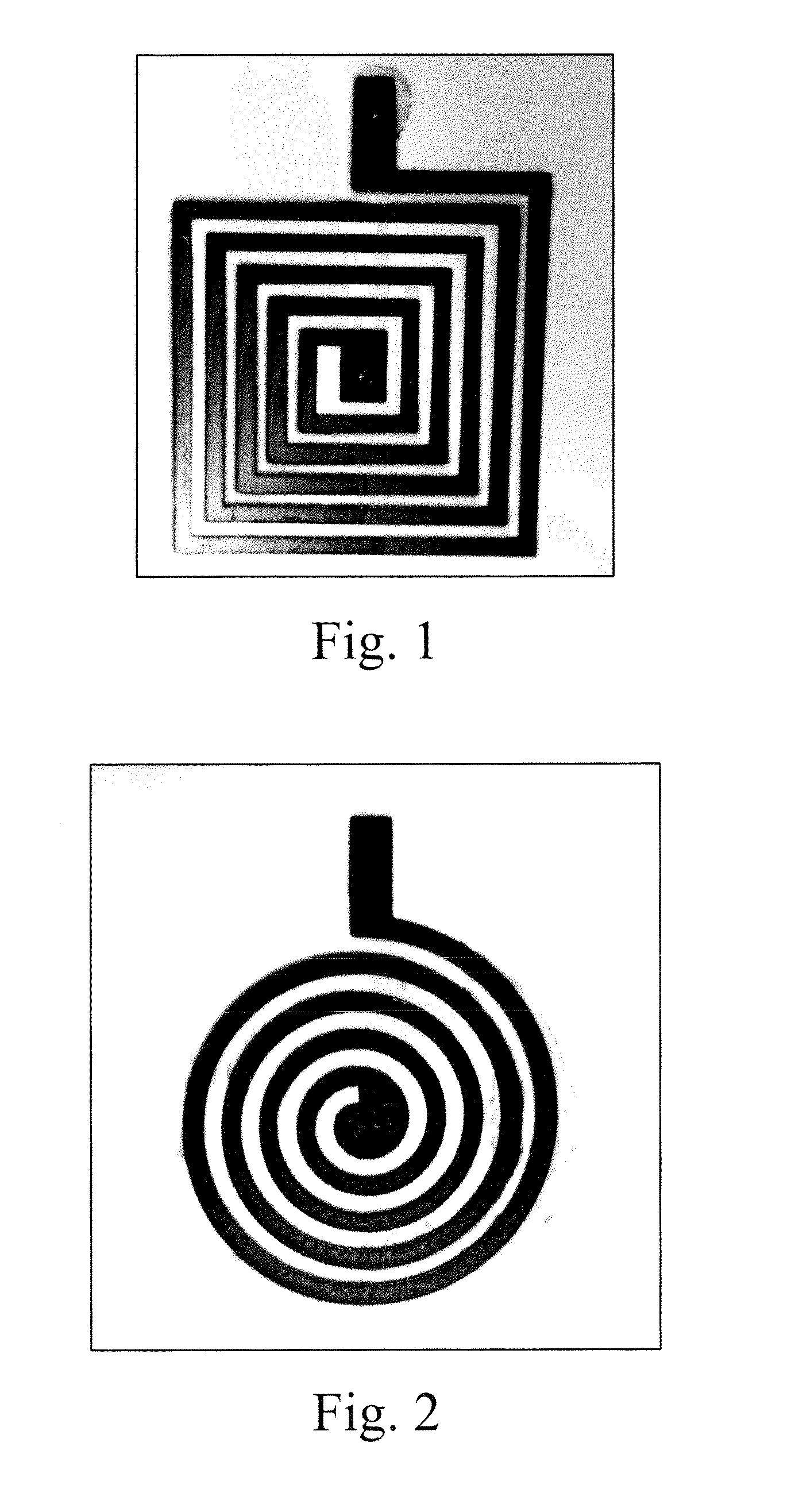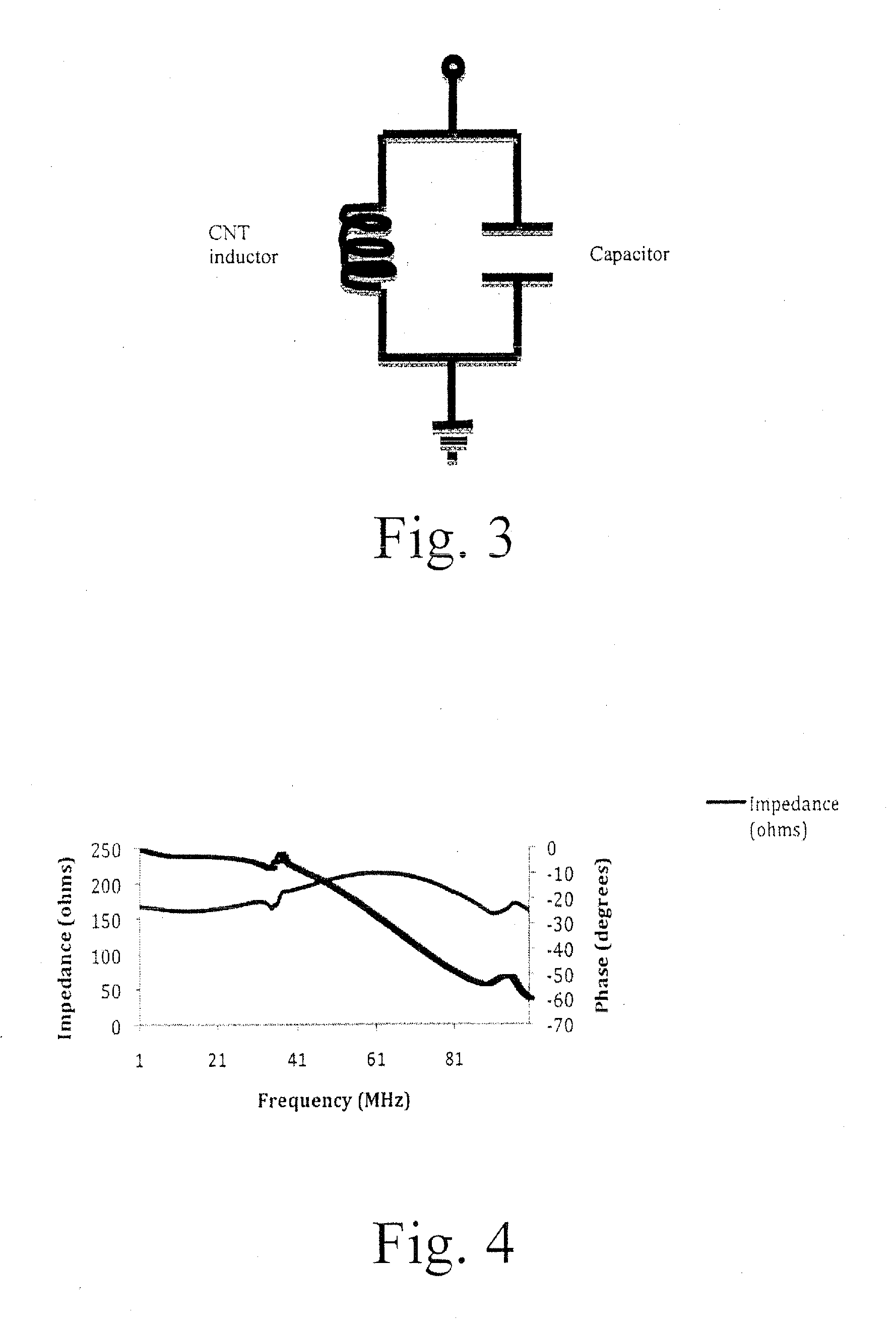All-organic inductor-capacitor tank circuit for radio frequency sensor applications
a technology of inductance and capacitor, applied in the field of inductance capacitor, can solve the problems of high resistivity, failure to make such sensors, etc., and achieve the effects of poor conductivity, less usability, and affecting the resistance, inductance and capacitance of the circui
- Summary
- Abstract
- Description
- Claims
- Application Information
AI Technical Summary
Benefits of technology
Problems solved by technology
Method used
Image
Examples
example 1
Printing of Circular and Rectangular CNT Inductor Coils
[0047]The inductor coils were deposited on a polyethylene terephthalate (“PET”) substrate by spray coating a solution of CNTs functionalized with 1-pyrenemethylamine (CNTRENE® 3010 A8-R, Brewer Science, Inc., Rolla, Mo.). The spray coater was equipped with a Sonotek ultrasonic spray nozzle. The spray nozzle was located at about 1.5 inch above the substrate surface (sitting on a heated platen) with the sonication power set at 3 W. The material spray rate was set at 10 mL / hour. The spray coating line space was set at 1 mm with a spray coating speed of 60 mm / sec. A 0.007 inch thick tungsten stencil with the desired inductor coil pattern was placed on top of the substrate surface. Spray coating was carried out using the above-mentioned parameters. Multiple layer of coatings was required to achieved the desired thickness / resistance.
[0048]After deposition, the platen was heated to 130° C., and no post-deposition processing was necessa...
example 2
Testing of CNT Inductor Coil with Commercially Available Capacitor
[0049]The circular CNT-based inductor coil from Example 1 was wired to a prototype circuit board as shown in FIG. 3. The capacitor used was a 12 pF Ceramic capacitor (XICON Passive Components, Arlington, Tex.). The circuit board was connected to the impedance test kit and an impedance analyzer (HP4195A, Agilent Technologies, Santa Clara, Calif.) by RF connectors. The input into the circuit was 500 mV.
[0050]An impedance and phase plot of the CNT inductor was created using an impedance analyzer. FIG. 4 shows this plot for the CNT inductor with the 12 pF capacitor.
example 3
Testing of CNT Capacitor with a Commercially Available Inductor
[0051]A CNT capacitor was made by spray coating the CNT solution used in Example 1 to form electrodes. A commercial grade polyimide thin film (Kapton, from DuPont) was used as the dielectrics. The wiring scheme was the same as that shown in FIG. 3. FIG. 5 shows the impedance and phase plot for a 1-μH polystyrene film inductor (XICON Passive Components) with the CNT capacitor. The input into the circuit was 500 mV.
PUM
| Property | Measurement | Unit |
|---|---|---|
| thickness | aaaaa | aaaaa |
| thickness | aaaaa | aaaaa |
| thickness | aaaaa | aaaaa |
Abstract
Description
Claims
Application Information
 Login to View More
Login to View More - R&D
- Intellectual Property
- Life Sciences
- Materials
- Tech Scout
- Unparalleled Data Quality
- Higher Quality Content
- 60% Fewer Hallucinations
Browse by: Latest US Patents, China's latest patents, Technical Efficacy Thesaurus, Application Domain, Technology Topic, Popular Technical Reports.
© 2025 PatSnap. All rights reserved.Legal|Privacy policy|Modern Slavery Act Transparency Statement|Sitemap|About US| Contact US: help@patsnap.com



